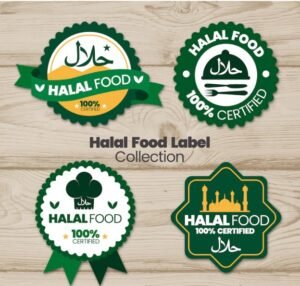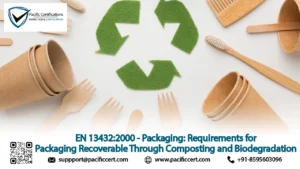
Steel and aluminium are two of the most common materials used in construction. Unfortunately, they also have several inherent weaknesses that can lead to failure. This article will discuss the main types of steel structures and aluminium structures, outline the different types of failure that can occur, and provide some tips on how to ensure that your steel or aluminium structure is executed correctly.
What is DIN EN 1090-1- Execution of steel structures and aluminium structures?
DIN EN 1090-1- Execution of steel structures and aluminium structures is a guide intended to help designers, constructors, supervisors and other professionals to ensure that steel and aluminium structures are properly executed in accordance with the applicable national and international standards and specifications.
The document covers a range of topics, including:
– Conceptual design;
– Structural analysis;
– Material selection;
– Quality assurance;
– Structural testing; and
– Also, Final inspection.
What are the requirements of DIN EN 1090-1- Execution of steel structures and aluminium structures?
Steel and aluminium structures have different requirements when it comes to execution.
Steel structures require a higher level of precision when it comes to the execution process. This is because steel is a strong metal, and any mistakes during the execution can lead to serious consequences.
Aluminium structures, on the other hand, do not require as much precision. This is because aluminium is a lightweight metal, and it does not take as much force to collapse an aluminium structure as a steel structure would.
Both steel and aluminium structures require specialised equipment and skilled personnel in order to be executed properly. It is important to find a company that is experienced in executing these types of structures, so that you can avoid any potential complications.
What are its benefits?
DIN EN 1090-1 is a standard for the design, construction, and performance of steel and aluminium structures. The standard is based on global best practices. And provides guidelines for the design, construction, and performance of steel and aluminium structures.
Some of the benefits of using DIN EN 1090-1 include:
• Reduced cost – Using DIN EN 1090-1 can save you money because it will help you to avoid common mistakes.
• Improved safety – DIN EN 1090-1 provides safe design standards that will help to prevent accidents.
• Better quality – Using DIN EN 1090-1 will result in better quality structures because it is based on global best practices.
Who needs DIN EN 1090-1- Execution of steel structures and aluminium structures
Steel and aluminium structures are two of the most common types of construction projects. They are used in everything from skyscrapers to bridges.
Constructing steel and aluminium structures is a very detailed process that requires a lot of precision. That’s where DIN EN 1090-1 comes in.
DIN EN 1090-1 is the standard for executing steel and aluminium structures. It covers everything from design to installation.
Therefore, you need to be familiar with DIN EN 1090-1 if you want to build a steel or aluminium structure correctly.
If you need more support with DIN EN 1090-1, please contact us at +91-8595603096 or support@pacificcert.com
Why is CE Marking Important for DIN EN 1090-1?
DIN EN 1090-1 certification is directly linked to CE marking requirements for structural metal components sold within the European Economic Area. As per the EU Construction Products Regulation (CPR), manufacturers of load-bearing steel and aluminium structures must demonstrate conformity with EN 1090-1 through CE marking.
The CE marking ensures:
Compliance with European construction safety standards
Legal market access across the EU
Recognition of the product’s quality and performance
Assurance that a Factory Production Control (FPC) system is in place
Without CE marking under EN 1090-1, manufacturers may face legal penalties and be restricted from selling their products in EU markets.
Certification Process with Pacific Certifications
At Pacific Certifications, we simplify the DIN EN 1090-1 certification process with end-to-end support:
Initial Consultation
Understanding your production scope and execution class (EXC1–EXC4)
Gap Analysis
Reviewing current systems and identifying areas that need alignment with EN 1090-1 requirements
Documentation & FPC Setup
Assistance with technical documentation and implementing a Factory Production Control system
Welding Procedure and Personnel Qualifications
Ensuring compliance with welding standards (e.g., ISO 3834)
Audit & Inspection
A comprehensive audit conducted by an accredited body
Issuance of Certificate & CE Marking
Once compliant, you will receive your EN 1090-1 certificate and may affix the CE mark to your structural components
Scope of Certification
DIN EN 1090-1 applies to a wide range of structural steel and aluminium components, including:
Beams, columns, frames, trusses
Pre-fabricated structural elements
Bridges, staircases, and platforms
Railings, gates, and support structures
Modular construction elements
It covers all execution classes (EXC1 to EXC4), depending on the complexity and criticality of the structure.
Why Choose Pacific Certifications?
Accredited and globally recognized certification body
Tailored guidance for CE marking and FPC implementation
Support for related standards like ISO 9001, ISO 3834, and ISO 14001
Fast turnaround and industry-specific expertise
Transparent pricing and ongoing compliance support
Get Started with EN 1090-1 Certification
Ensure compliance and market access across the EU. Contact Pacific Certifications today to schedule a consultation or request a customized quote for DIN EN 1090-1 certification.
Suggested Certifications –
FAQs for DIN EN 1090-1- Execution of steel & Aluminium structures
Is DIN EN 1090-1 certification mandatory?
Yes, for manufacturers supplying structural steel and aluminium components in the EU, EN 1090-1 certification and CE marking are legally required under the Construction Products Regulation.
What is the difference between EN 1090-1 and EN 1090-2?
EN 1090-1 covers the conformity assessment and CE marking process, while EN 1090-2 specifies the technical requirements for the execution of steel structures (like welding, tolerances, surface treatment, etc.).
How long is the EN 1090-1 certificate valid?
Typically, the certificate is valid for 3 years, subject to successful annual surveillance audits to ensure ongoing compliance.
Can small manufacturers apply for EN 1090-1?
Yes, even small-scale fabricators must comply if they produce load-bearing components for the EU market. Execution Class EXC1 is designed for simpler structures.






